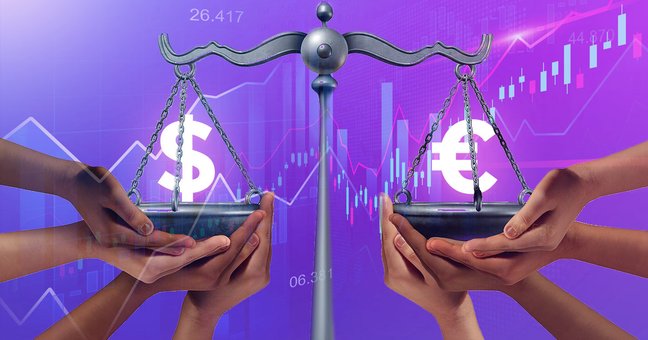Parity Meaning in Trading Explained
Parity meaning is generally used in the context of price as well as different types of assets and markets. Parity definition describes two traded instruments with equal value. The term can be applied across various niches and financial fields in references to such assets as stocks, currency pairs, bonds, commodities, and some other options.

Parity meaning refers not only to the price. It can be overviews on the concept of different macroeconomic variables that may include interest and exchange rates, etc. In this article, we will try to define parity meaning along with its major types and examples.
Key Factors to Define Parity Meaning
As stated earlier, parity is generally overviewed as the price factor showing two equal assets that can be either commodities or securities. It comes with a set timeframe when the two instruments remain equal. Depending on the asset type, parity is used to identify the most profitable period to convert one instrument to another. When an investor trades two assets in parity, it means they come with similar value and price. The key factors to consider involve:
- Two or more assets can be traded at parity to show their price level and equivalent value.
- Parity can be utilized in a range of trading scenarios depending on the type of instrument you trade.
- Parity is the momentum when it is the best chance for investors to convert one asset to another, for example, one currency to another or convertible bonds to common stocks.
up to 200%

from 0 pips

Trading platform

Parity Meaning in Forex
When it comes to the Forex market, traders use the concept to identify undervalued or overloaded currencies. This is where the method of reversion may turn out to be a success. According to this methodology, undervalued currencies will go up sooner or later to rise against overloaded assets. So, one should be well-prepared to trade at parity when the moment comes.
As a Forex trader, you will have to use the concept of PPP (Purchasing Power Parity). It makes it possible to spot currencies that are generally traded below the fair price or a so-called parity value. It means that the asset has a great potential to rise in the nearest future. The steps are quite simple:
- First of all, you need to sell overloaded currency.
- Then, you need to purchase undervalued ones with the hope that they will eventually return to parity.
Of course, the strategy comes with certain risks. The main downside of using the PPP concept is the fact that it makes no sense in case of short-term trading tactics. Day traders often overview mixed signals and results that are quite hard to confirm. For this reason, trading at parity will only work for long-term strategies, while scalpers should look for something else.
Major Parity Examples
Parity examples generally depend on the type of asset you trade. As we have already discussed, the concept can be used across various markets. However, the most common ones are as follows:
- Convertible Bonds – the type of asset that makes it possible to convert bonds into common stocks. As a result, investors can gain stable and long-lasting income. As a rule, the revenue is used to convert into the company’s equity.
- Options Market – parity lets traders evaluate the level of asset options (generally stocks). Here, they will need to consider intrinsic value, expiration date. The strike price, and some other crucial factors.
The Bottom Line
Parity meaning describes two assets with equal price and value. It can be used across various markets to identify overloaded and undervalued assets as well as the best time to convert bonds into common stocks. The concept does not meet the needs of short-term traders as it often comes with mixed results. At the same time, long-term strategies can bring a long-lasting and fixed income.
This material does not contain and should not be construed as containing investment advice, investment recommendations, an offer of or solicitation for any transactions in financial instruments. Before making any investment decisions, you should seek advice from independent financial advisors to ensure you understand the risks.
